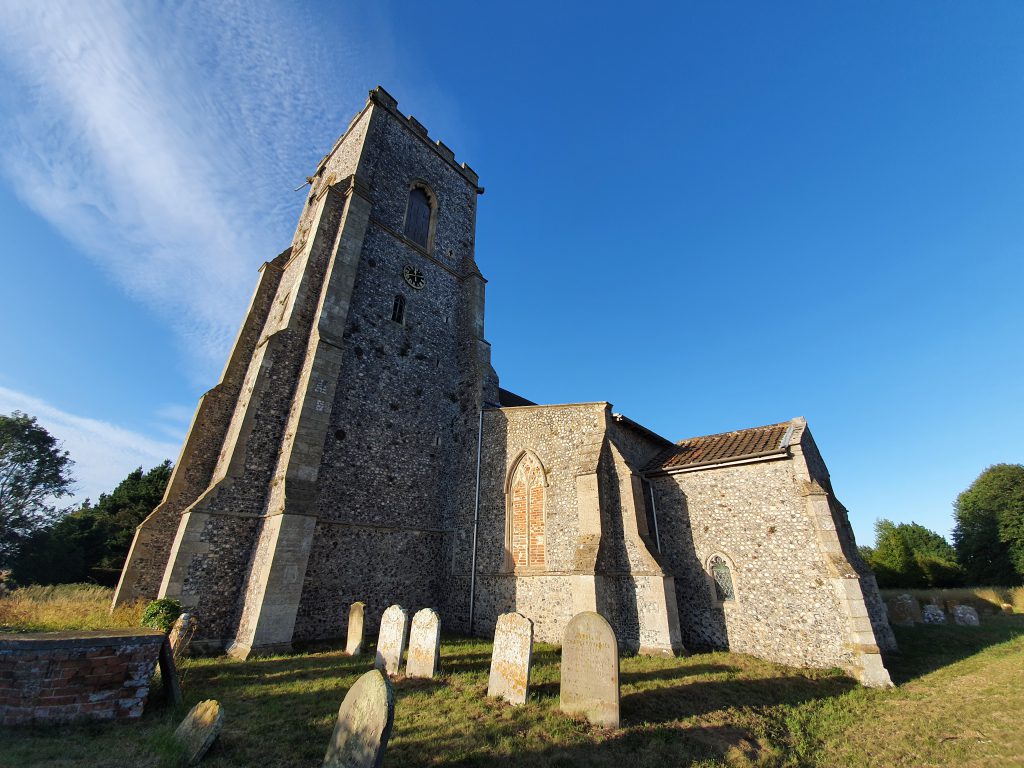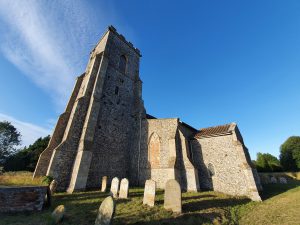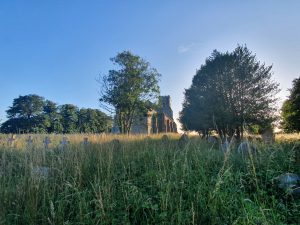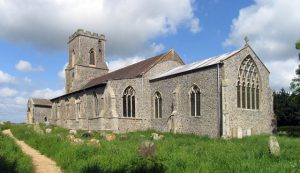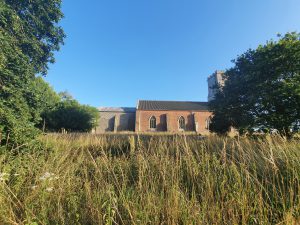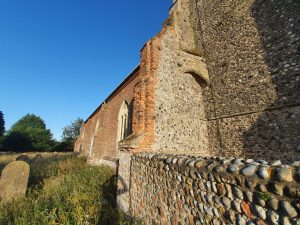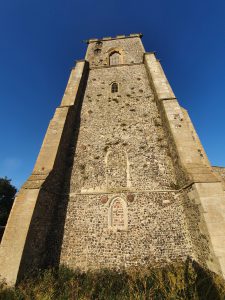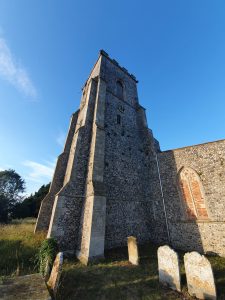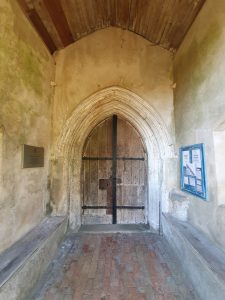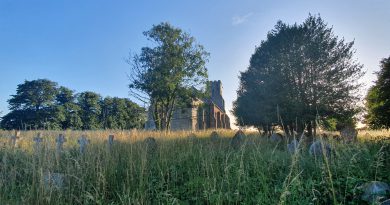East Ruston – St. Mary’s Church
One of the first obvious things of note about St. Mary’s Church in East Ruston is that it’s not really in East Ruston. It instead has a rather precarious position by a main road and is one of the few churches that looks entirely different depending on which side it’s viewed on.
The main part of the churchyard has been turned (perhaps not deliberately) into a large wildlife garden, making it rather difficult to take photos of the church from some angles. The foliage is quite high and I could just sense the snakes that were lurking in the undergrowth, so I didn’t intend to charge in.
So, I’ve used this photo (by John Salmon, https://commons.wikimedia.org/w/index.php?curid=13001263) to show what the church did look like before the foliage surged in height.
And this is the church from the other side, the nearest I could get to it. It looks like a completely different church, but it’s because the north aisle was removed in 1778. It’s an interesting question of why bricks were used in this transformation given the rest of the church was made from flint, were people at all concerned about the aesthetic appearance of the building then?
There is record of one of the vestry meetings which was held before the north aisle was removed, and there was a problem because a decision was made to use bricks, but no-one at the meeting knew how many would be needed. They tried to work this conundrum out, but failed, so they instead sought the assistance of the young Richard Porson, a local boy who became a well-respected mathematician.
Another view of the north side of the church, as best I could get, with a strange wall at the front of the photo which is underneath the tower. I have no idea what that’s there for.
The tower is contemporary with the main part of the church, which is fourteenth-century, although there was likely a previous church on the site from an earlier date.
The church once had a spire, but it was either taken down or fell off. The almost inevitable Victorian restoration came to this church late, financed in the mid-1880s with funding from Maria Atthill, the wife of the former churchwarden. Before this money came in, the church had fallen into a state of some considerable disrepair.
The south porch is a little later than the rest of the structure, being added in the fifteenth century. As the church is redundant, the building is now under the care of the Churches Conservation Trust, but the interior is currently closed until they can complete a risk assessment. There is apparently a chancel screen inside which is worth seeing, as well as a fifteenth-century font, so I shall hopefully meander along again to see the interior.

